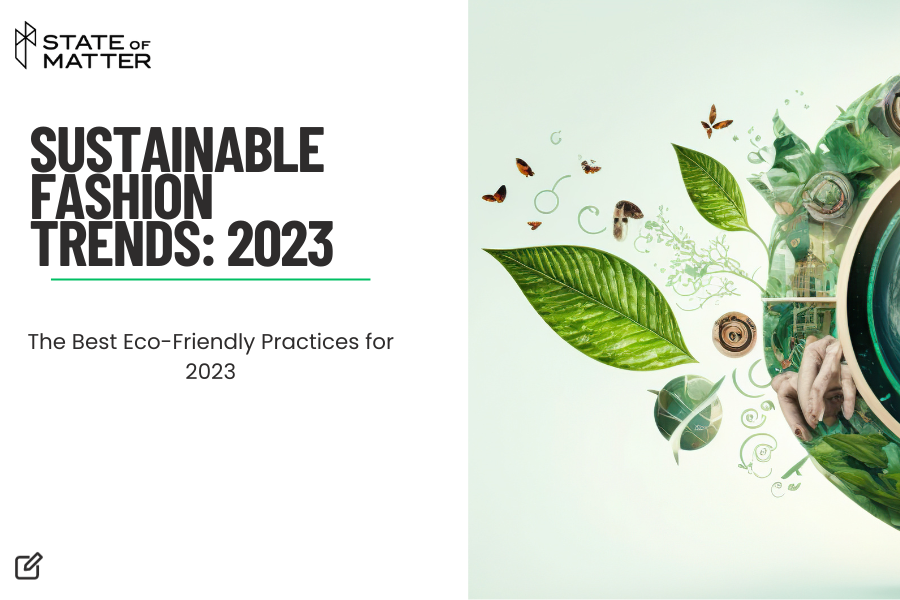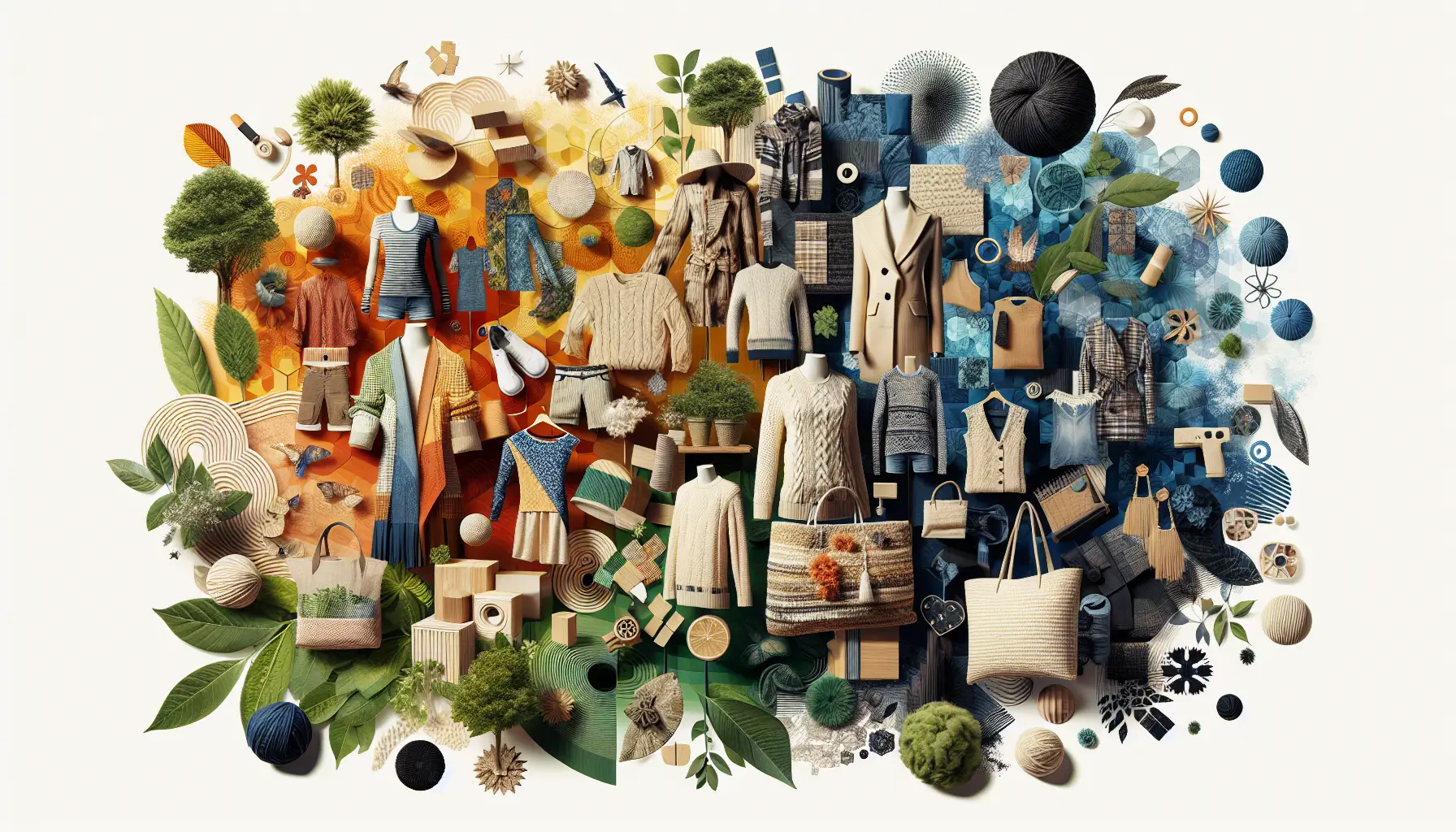Sustaining Regional Cape Town Sustainable Fashion for a Greener Future
Wiki Article
Stay Ahead of the Contour by Exploring Innovative Style Trends
In an industry as vibrant as style, staying ahead includes even more than simply following existing patterns-- it requires an exploration of technology. The merging of modern technology and style declares a new period of customer engagement.
Embracing Smart Textiles
Over the last few years, the fashion business has witnessed a transformative change with the integration of clever fabrics, an innovative technology that blends modern technology with material. This evolution stands for not just a combination of visual appeals and performance however additionally a significant leap in the direction of sustainability and customization in vogue. Smart fabrics, also recognized as e-textiles, embed sophisticated electronic devices such as sensors and conductive strings within the textile, allowing garments to connect with the user or the environment.These fabrics are made to monitor physical specifications, such as heart price or body temperature, giving real-time health and wellness analytics. Beyond health applications, clever fabrics are likewise being utilized for flexible clothes, which can change shade or pattern in reaction to ecological stimuli, therefore using a vibrant style experience.
Furthermore, the growth of energy-harvesting textiles that create power from activity or sunshine is leading the way for self-sufficient wearable technology. This advancement is attracting ecologically aware consumers and developers aiming to minimize the environmental footprint of style. As r & d in this field development, clever textiles are expected to end up being significantly widespread, reshaping the landscape of modern-day style with their multifunctional capacities.
The Surge of 3D Printing
Changing the manufacturing landscape, 3D printing has actually become a game-changer in the apparel industry. This advanced modern technology has actually made it possible for designers to push the borders of creative thinking, creating elaborate and tailored garments that were previously unbelievable. By leveraging electronic layout and additive production, 3D printing helps with the creation of complicated geometries and patterns, permitting designers to explore new textures and structures.A significant benefit of 3D printing in vogue is its capacity to create on-demand, minimizing waste and minimizing supply demands. This efficiency not just optimizes manufacturing procedures but additionally allows for rapid prototyping, making it possible for developers to bring their visions to life in a much shorter duration. In addition, 3D printing supports personalization to a level unrivaled by typical techniques, using unique designs and tailored fits tailored to specific customer preferences.
The rise of 3D printing has actually also equalized fashion, making it obtainable to emerging developers who can currently fabricate premium pieces without substantial financial investment in standard manufacturing framework. As innovation continues to development, the apparel industry is positioned to harness the complete possibility of 3D printing, discovering new materials and strategies that will definitely redefine just how style is conceived and produced.
Lasting Fashion Innovations
As the apparel industry comes to grips with the pushing demand for ecological duty, sustainable style advancements have emerged at the center of transformative adjustment. The growing awareness of environmental influence has sustained a change towards more eco-conscious methods and materials. Designers and brands are currently focusing on sustainability, integrating methods that decrease waste and decrease carbon impacts.One considerable growth is the rise of circular style, which highlights recycling and upcycling to extend the lifecycle of garments. This method not just minimizes waste but likewise encourages go to my blog consumers to embrace a much more investigate this site mindful strategy to clothes usage.
An additional advancement depends on the fostering of ingenious dyeing methods that utilize natural dyes or waterless procedures, therefore lowering the vast amounts of water and chemicals commonly utilized in fabric dyeing. Additionally, advancements in biotechnology have actually brought about the development of lab-grown natural leather and textiles, offering cruelty-free and environmentally friendly alternatives to traditional products. With these introducing initiatives, the apparel industry is making meaningful strides in the direction of a more sustainable future.

Tech-Integrated Garments
Tech-integrated garments stands for a cutting-edge fusion of fashion and innovation, reshaping exactly how people communicate with their clothes. This cutting-edge domain name is marked by the incorporation of wise fabrics and embedded electronic parts, improving both capability and aesthetic charm. From physical fitness trackers installed in sportswear to heated coats controlled using smartphone applications, tech-integrated garments offers customers unmatched comfort and flexibility.Introducing brands are driving this fad, concentrating on creating garments that reply to environmental stimuli or individual commands. As an example, some garments can change color or pattern in response to temperature changes, while others incorporate biometric sensing units to monitor health and wellness metrics like heart rate or stress and anxiety levels. The smooth integration of modern technology into textiles likewise reaches ecological sustainability, with initiatives to develop self-cleaning materials or garments that adapt to weather, hence minimizing the need for several layers.
Moreover, the development of wearable innovation is not just restricted to apparel but reaches accessories like watches and eyeglasses, more broadening the extent of tech-integrated style. As the sector continues to innovate, the capacity for customization and personalization in clothing expands, using customers one-of-a-kind, tech-enhanced style experiences that cater to their private needs and preferences.
Future of Virtual Fashion
Over the last few years, the future of online fashion has arised as a transformative force within the market, leveraging improvements in electronic innovation to redefine exactly how fashion is created, experienced, and consumed. By integrating enhanced fact (AR), digital truth (VIRTUAL REALITY), and 3D design devices, developers can now craft interactive and immersive experiences that go beyond traditional fashion boundaries. pop over to this site Digital fashion permits the development of garments that exist entirely in electronic atmospheres, using limitless possibilities for advancement without the limitations of physical manufacturing.This electronic shift not only provides opportunities for imaginative expression yet additionally addresses sustainability concerns intrinsic in standard fashion techniques. Cape Town Sustainable Fashion. By eliminating the need for physical sources, virtual fashion decreases waste and decreases carbon footprints. Additionally, the surge of virtual fashion lines up with the enhancing consumer need for unique and individualized experiences, as virtual garments can be personalized and tailored to individual preferences easily

Conclusion
The style market's future depend on the combination of ingenious innovations and sustainable techniques - Cape Town Sustainable Fashion. Smart textiles and tech-integrated apparel are enhancing performance, while 3D printing supplies chances for personalization and waste reduction. Sustainable style, with green materials and circular approaches, shows a commitment to environmental stewardship. Moreover, digital fashion is positioned to redefine consumer interactions. Adapting to these patterns is necessary for brand names seeking to continue to be appropriate and competitive in this rapidly evolving landscape.In recent years, the fashion sector has experienced a transformative shift with the assimilation of clever textiles, an advanced development that mixes innovation with material.As the style market grapples with the pressing requirement for environmental obligation, sustainable fashion advancements have actually arised at the forefront of transformative modification.In recent years, the future of digital style has actually arised as a transformative force within the market, leveraging innovations in digital innovation to redefine just how style is created, experienced, and taken in. The increase of digital style straightens with the enhancing consumer need for one-of-a-kind and tailored experiences, as online garments can be tailored and customized to private preferences with simplicity.
The fashion market's future lies in the integration of innovative innovations and sustainable practices.
Report this wiki page